- My Country by Dorothea McKellar.
- "I love a sunburned country, a land of sweeping plains.....of rugged mountain ranges of droughts and flooding rains.."
- Well there isn't much flooding rain anymore. So we and the governments must start to do
- something about it. Some measures are obvious and simple.
- *************************************************************************
- Greenhouse- style domes in the desert distilling seawater into drinking water. First create saltwater lake from sea by canal.
- Combat Global Warming. Help save the arid areas of the world. Send u.r.l. of this website to government departments and media. (Ric) if you have any ideas or comments, send them to me by e mail or via comments .

- One of these giant excavators could build a canal from Port Augusta to Lake Eyre in months, filling the old inland sea with saltwater. This would change the climate and assist in turning Central Australia into a rich agricultural area.
- Australia, these ideas will change deserts into gardens of Eden, and deserts which now cover most of Australia..

 (Well maybe not roses.) From the waterless desert above, changed to domed greenhouse oases.
System for desalinization of saltwater
(Well maybe not roses.) From the waterless desert above, changed to domed greenhouse oases.
System for desalinization of saltwater
Thu Jan 24 14:46:59 -0800 2008
| manage |
Domed Cities
Fri Jan 25 20:07:30 -0800 2008
| manage |
I think eventually the energy savings would offer quite a decent payback, a return on investment. Maybe humans should start with domed "villages" first and work up to cities, but then again, you might need to make a domed "everything" to make it work, some city type action, some farms, some parks and recreation areas, a lake or two, etc, all under a common dome. I think we need some more advances in material science and engineering first though, I can't imagine a dome of that size-x-square miles- being built today with what tech I am aware of anyway, although just miles of connected greenhouses would be quite possible, expensive but doable. Heck, just normal high rise towers are pretty darn expensive as it is. That concept combined with underground/geothermal is probably the best bet for future proofing for energy reduction and water conservation needs.
*************************************************************************************
Since writing the first article I have found the same idea in different forms. The simplest is the cone and I will put in the whole article. My idea is essentially the same but expanded from a small cone to a dome about thirty or fifty feet across, using clear plastic. Otherwise it is the same.
*********************************************************************************
The large proposed operation is more elaborate and could cost a few millions to construct, but the scale is so large that the cost would be worth it. The dome i propose could be made for a thousand dollars or less. (Ric)
Watercone - An Ingenious Way To Turn Salt Water Into Fresh Water
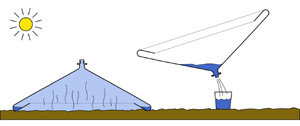
The Watercone is an ingenious device that can take salty water and turn it into fresh water using only the power of the sun. The nice thing about this device is it is bone simple, uses the sun instead of fossil fuel, and is cheap to make and easy to use.

The Watercone is surprisingly a cone, that you place over a pan of salty water (or over a marsh, or any damp ground) leave it out in the sun, water evaporates, the condensation trickles down the side of the cone, at the end of the day you flip it over, remove the cap at the top and drink the water.
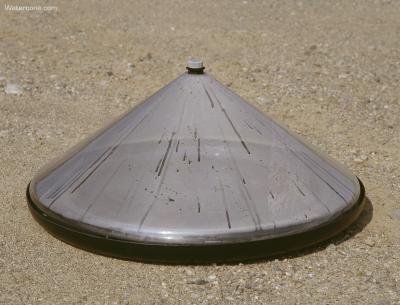
This device has the potential to really do a lot of good for a lot of people. So many people live in areas where the ground water has been polluted by salt incursion due to over pumping, or in areas that simply don’t have large fresh water sources (south pacific islands, sub-Saharan Africa, south-east Asia). The Watercone is made from UV resistant plastic and they claim that it will last up to five years, after which it can be used to collect rainwater and funnel it into bottles.
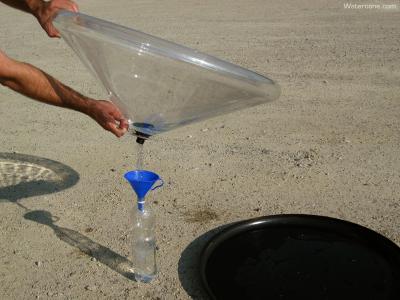
They claim that on average one Watercone can produce one liter of water per-day. I could image a whole fleet of these things for a village. They float, so you could place them over a small pool of salt water and just collect fresh water all day. At about 20 Euros it would pay for itself in a couple of months and provide potable water for the next 4-5 years. It is also recyclable and non-flammable.
The Watercone website has some really interesting information and I highly recommend checking it out.
1. Much cheaper than bottled water. Watercone life expectancy: 3 to 5 years. Price: planned below € 20.- Average Price of 1 liter of bottled water in developing countries: $US 0,50. Presuming a daily usage of the Watercone and a daily average yield of 1 liter, the Watercone has paid for itself in about 2 mounth and will work for free the next 5-7 years!I am happy to note that there is a project pretty much what I envisioned, although much more elaborate. I came to the above ideas independently but I don't care who carries out the scheme, as long as it happens....(Ric)
2. Absolutely, low concept and low tech. As opposed to other types of solar stills which feature electronics, photo-voltaic cells, tubes, filters, many parts, etc. the Watercone concept is understood within seconds with absolutely no need for academic background. Additionally it (cone & pan) is made from Bayer Makrolon, a high-tech ultra-rugged and highly recyclable polycarbonate, virtually insensitive to UV exposure or breakage, an all too common result of rough transport.
3. Perfect for coastal dwellers. There are at least 50 sunny, developing countries worldwide with a significant amount of sea- or coastline. Many from their populations, hundreds of millions, live in nearest proximity to water but cannot drink it or use it for agriculture, because it is saltwater. Large families, hamlets, villages could all experience dramatically improved quality of life starting from as little as a dozen Watercones set up close by the sea.
4. Perfect for medical purposes. There are thousands of hospitals in developing countries, field and mobile hospitals, first aid and emergency medical units around the world that are located in sunny climates and lack condensed water. Outfitted with just a dozen Watercones, a little field hospital could harvest 15 liters of condensed water per day. More than enough to make a difference for life or death.
5. Creates jobs. For centuries water vendors have walked the markets of hamlets, villages and cities around the world, mostly in Africa, the Mid East and Asia. Based in the vicinity of salt or brackish water and outfitted with a minor credit line, these vendors could invest in a dozen Watercones and sell 15 liters of water a day and have their investment returned in no more than half a year.
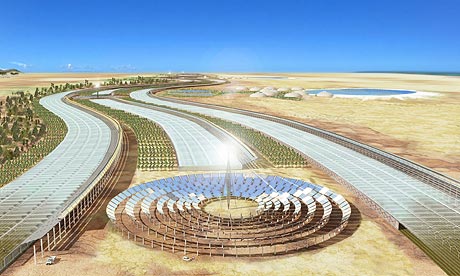

The Sahara Forest Project, which is already running demonstration plants in Tenerife, Oman and the United Arab Emirates, envisages huge greenhouses with concentrated solar power (CSP), a technology that uses mirrors to focus the sun's rays, creating steam to drive turbines to generate electricity.
The installations would turn deserts into lush patches of vegetation, according to its designers, and do away with the need to dig wells for fresh water, an activity that has depleted aquifers across the world.
Charlie Paton, a member of the team, and the inventor of the Seawater Greenhouse, said the scheme was a proven way to transform arid environments. "Plants need light for growth but they don't like heat beyond a certain point," he said.
Above certain temperatures the amount of water lost through leaves' stomata rises so much plants stop their photosynthesis and do not grow. The solar farm planned by the project runs seawater evaporators, pumping damp, cool air through the greenhouses. This reduces the warmth inside by about 15C, compared with the temperature outside.
At the other end of the greenhouse from the evaporators, water vapour is condensed. Some of this fresh water is used to water the crops, some for cleaning the solar mirrors.
"So we've got conditions in the greenhouse of high humidity and lower temperature," said Paton. "The crops sitting in this slightly steamy, humid condition can grow fantastically well."
The designers said that virtually any vegetables could be grown in the greenhouses. The demonstration plants already produce lettuces, peppers, cucumbers and tomatoes. The nutrients to grow the plants could come from local seaweed or be extracted from the seawater.
Michael Pawlyn, of Exploration Architecture, based in London, worked on the Eden Project for seven years and is now part of the Sahara Forest team. He said that the Seawater Greenhouse and CSP provided substantial synergies for each other. "Both technologies work extremely well in hot, dry, desert locations. CSP produces a lot of waste heat and we'd be able to use that to evaporate more seawater from the greenhouse. And CSP needs a supply of clean, de-mineralised water in order for the [electricity generating] turbines to function and to keep the mirrors at peak output. It just so happens the Seawater Greenhouse produces large quantities of this."
Paton said the greenhouse produced more than five times the fresh water needed to water the plants inside, so some of the water could be released to the outside, creating a microclimate for hardier plants such as jatropha, a crop that can be turned into biofuel.
The cost of the Sahara Forest Project could be relatively low as both CSP and Seawater Greenhouses are proven technologies. The designers estimate that building 20 hectares (nearly 50 acres) of greenhouses combined with a 10MW CSP scheme would cost about €80m (£65m).
Paton said groups in countries across the Middle East, including in UAE, Oman, Bahrain, Qatar and Kuwait, have expressed interest in possibly funding demonstration projects.
He said use of Seawater Greenhouses could reverse the environmental damage done by the glasshouses already built in places such as the desert region of Almeria, southern Spain, where, constructed over the past 20 years to grow salad crops, they now covered more than 40,000 hectares.
Paton said: "They take water out of the ground something like five times faster than it comes in, so the water table drops and becomes more saline. The whole of Spain is being sucked dry. If one were to convert them all to the Seawater Greenhouse concept it would turn an unsustainable solution into a more sustainable one."
Pawlyn said: "In places like Oman they've effectively sterilised large areas of land by using groundwater that's become increasingly saline. The beauty of the Sahara Forest scheme is that you can reverse that process and turn barren land into biologically productive land."
Neil Crumpton, an energy specialist at Friends of the Earth, said the potential of these desert technologies was huge. "Concentrated solar power mirror arrays covering just 1% of the Earth's deserts could supply a fifth of all current global energy consumption. And 1 million tonnes of sea water could be evaporated every day from just 20,000ha of greenhouses."
Governments should invest in the technologies and "not be distracted by lobbyists promoting dangerous nuclear power or nuclear-powered desalination schemes", Crumpton added.
The International Energy Agency estimates that the world needs to invest more than $45 trillion (£22.5 trillion) in new energy systems over the next 30 years.
***************************************************************************








+copy.jpg)
































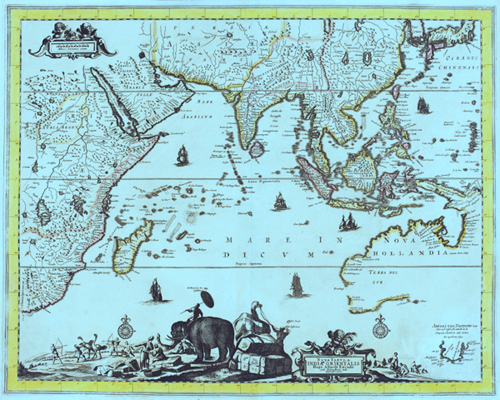





















.jpg)



























 G
G







.jpg)















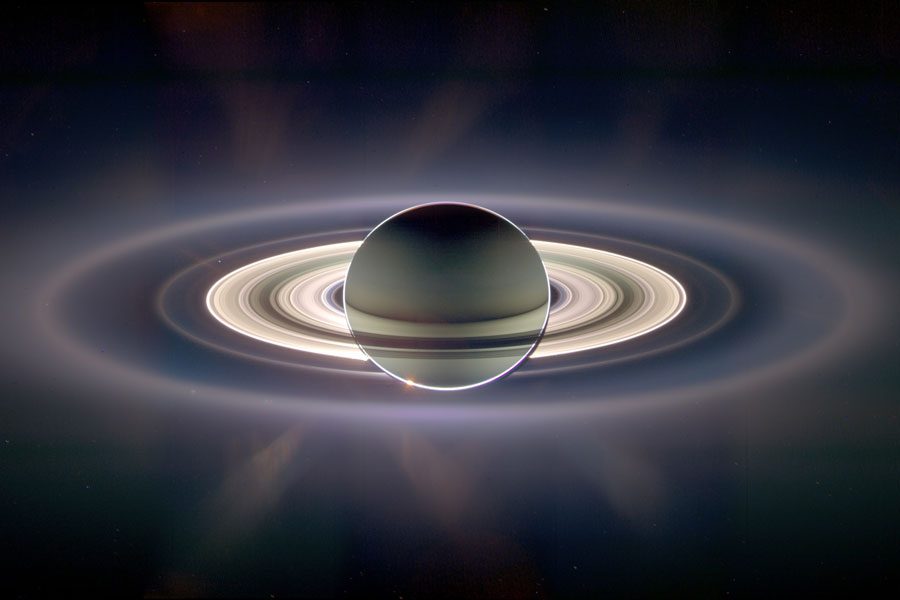
No comments:
Post a Comment